High throughput techniques to reveal the molecular physiology and evolution of digestion in spiders
- PMID: 27604083
- PMCID: PMC5013568
- DOI: 10.1186/s12864-016-3048-9
High throughput techniques to reveal the molecular physiology and evolution of digestion in spiders
Abstract
Background: Spiders are known for their predatory efficiency and for their high capacity of digesting relatively large prey. They do this by combining both extracorporeal and intracellular digestion. Whereas many high throughput ("-omics") techniques focus on biomolecules in spider venom, so far this approach has not yet been applied to investigate the protein composition of spider midgut diverticula (MD) and digestive fluid (DF).
Results: We here report on our investigations of both MD and DF of the spider Nephilingis (Nephilengys) cruentata through the use of next generation sequencing and shotgun proteomics. This shows that the DF is composed of a variety of hydrolases including peptidases, carbohydrases, lipases and nuclease, as well as of toxins and regulatory proteins. We detect 25 astacins in the DF. Phylogenetic analysis of the corresponding transcript(s) in Arachnida suggests that astacins have acquired an unprecedented role for extracorporeal digestion in Araneae, with different orthologs used by each family. The results of a comparative study of spiders in distinct physiological conditions allow us to propose some digestion mechanisms in this interesting animal taxon.
Conclusion: All the high throughput data allowed the demonstration that DF is a secretion originating from the MD. We identified enzymes involved in the extracellular and intracellular phases of digestion. Besides that, data analyses show a large gene duplication event in Araneae digestive process evolution, mainly of astacin genes. We were also able to identify proteins expressed and translated in the digestive system, which until now had been exclusively associated to venom glands.
Keywords: Arachnida; Astacin; Digestion; Enzyme; High throughput (-omics) techniques; Nephilingis (Nephilengys cruentata); Spider.
Figures
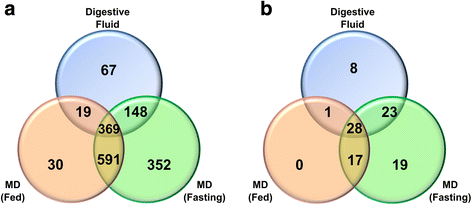
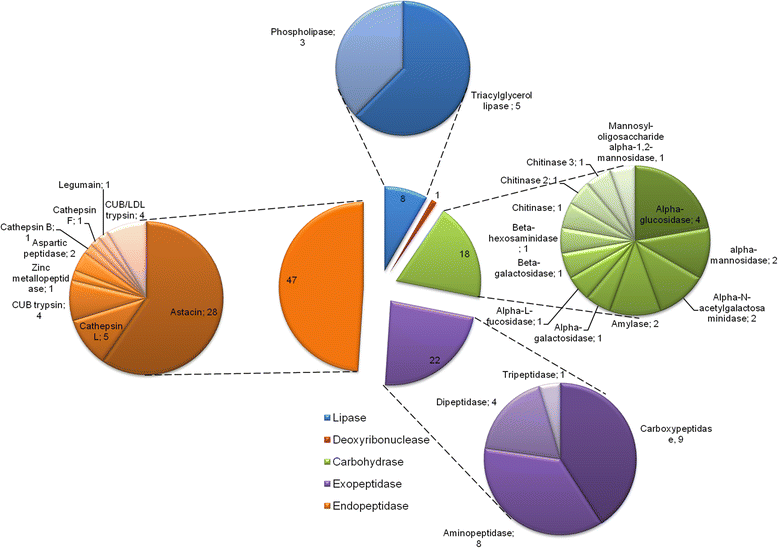
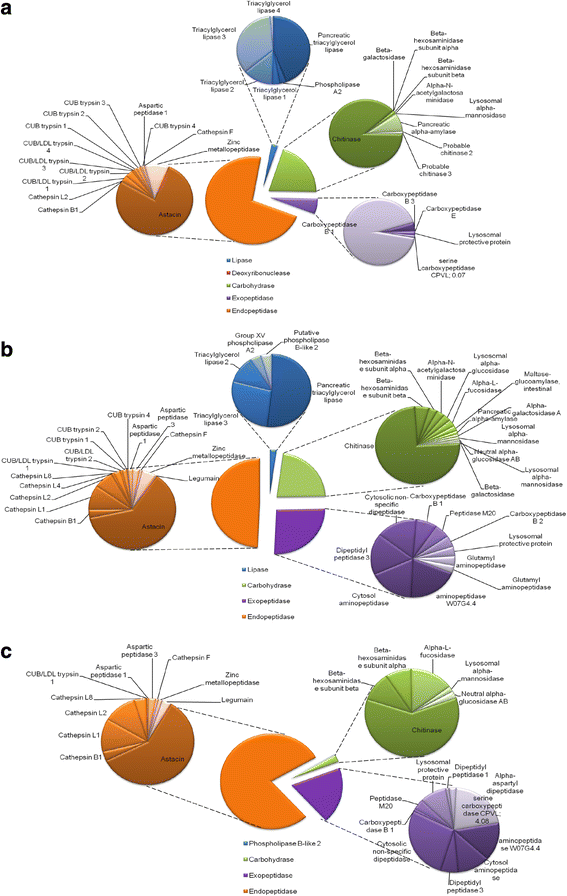
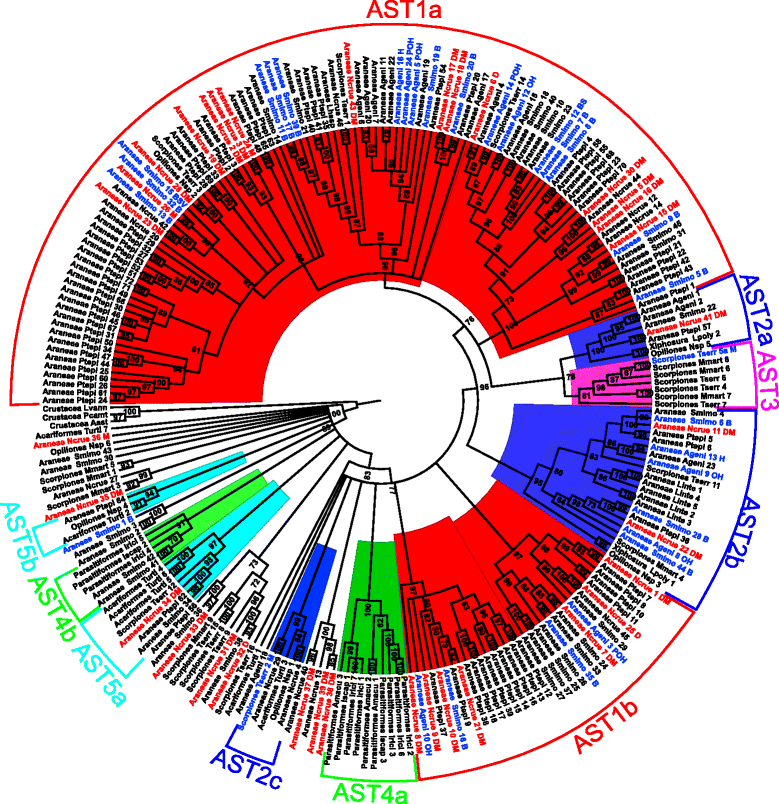
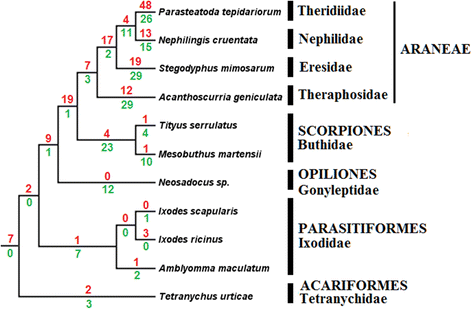
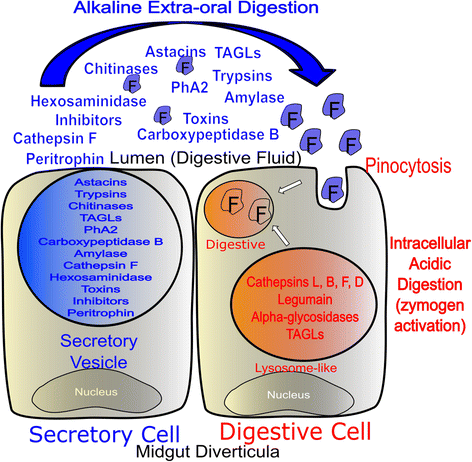
Similar articles
-
Cysteine cathepsins as digestive enzymes in the spider Nephilengys cruentata.Insect Biochem Mol Biol. 2015 May;60:47-58. doi: 10.1016/j.ibmb.2015.03.005. Epub 2015 Mar 25. Insect Biochem Mol Biol. 2015. PMID: 25818482
-
Biochemical, transcriptomic and proteomic analyses of digestion in the scorpion Tityus serrulatus: insights into function and evolution of digestion in an ancient arthropod.PLoS One. 2015 Apr 15;10(4):e0123841. doi: 10.1371/journal.pone.0123841. eCollection 2015. PLoS One. 2015. PMID: 25875018 Free PMC article.
-
Characterisation of protein families in spider digestive fluids and their role in extra-oral digestion.BMC Genomics. 2017 Aug 10;18(1):600. doi: 10.1186/s12864-017-3987-9. BMC Genomics. 2017. PMID: 28797246 Free PMC article.
-
Recent advances in the understanding of brown spider venoms: From the biology of spiders to the molecular mechanisms of toxins.Toxicon. 2014 Jun;83:91-120. doi: 10.1016/j.toxicon.2014.02.023. Epub 2014 Mar 11. Toxicon. 2014. PMID: 24631373 Review.
-
Systematics, phylogeny, and evolution of orb-weaving spiders.Annu Rev Entomol. 2014;59:487-512. doi: 10.1146/annurev-ento-011613-162046. Epub 2013 Oct 25. Annu Rev Entomol. 2014. PMID: 24160416 Review.
Cited by
-
Digestive enzymes and sphingomyelinase D in spiders without venom (Uloboridae).Sci Rep. 2023 Feb 15;13(1):2661. doi: 10.1038/s41598-023-29828-x. Sci Rep. 2023. PMID: 36792649 Free PMC article.
-
Toxic Habits: An Analysis of General Trends and Biases in Snake Venom Research.Toxins (Basel). 2022 Dec 17;14(12):884. doi: 10.3390/toxins14120884. Toxins (Basel). 2022. PMID: 36548781 Free PMC article. Review.
-
Spider-Venom Peptides: Structure, Bioactivity, Strategy, and Research Applications.Molecules. 2023 Dec 20;29(1):35. doi: 10.3390/molecules29010035. Molecules. 2023. PMID: 38202621 Free PMC article. Review.
-
Toxinology in the proteomics era: a review on arachnid venom proteomics.J Venom Anim Toxins Incl Trop Dis. 2022 Feb 28;28:20210034. doi: 10.1590/1678-9199-JVATITD-2021-0034. eCollection 2022. J Venom Anim Toxins Incl Trop Dis. 2022. PMID: 35291269 Free PMC article.
-
Enlightening the toxinological dark matter of spider venom enzymes.NPJ Biodivers. 2024 Sep 13;3(1):25. doi: 10.1038/s44185-024-00058-2. NPJ Biodivers. 2024. PMID: 39271930 Free PMC article.
References
-
- Peloso PL, de Sousa VP. Predation on Todirostrum cinereum (Tyrannidae) by the orb-web spider Nephilengys cruentata (Aranae, Nephilidae) Rev Bras Ornitol. 2007;15(3):461–463.
-
- Cohen AC. Extraoral Digestion in Predaceous Terrestrial Arthropoda. Annu Rev Entomol. 1995;40:85–103. doi: 10.1146/annurev.en.40.010195.000505. - DOI
-
- Ludwig M, Alberti G. Digestion in Spiders-Histology and Fine-Structure of the Midgut Gland of Coelotes-Terrestris (Agelenidae) J Submicr Cytol Path. 1988;20(4):709–718.
Publication types
MeSH terms
Substances
Associated data
LinkOut - more resources
Full Text Sources
Other Literature Sources
Miscellaneous

